Armistice Centennial: The Final Days Of The Great War Part Three – All Quiet On The Western Front
November 12, 2018 by oriskany
This week marks the 100th Anniversary of one of the most powerful moments in recent history, the fateful Armistice that effectively ended the First World War on November 11th, 1918. Over the past weeks, we’ve been reviewing the battles that led to this event and trying to bring some small sliver of these engagements to the table top.
Armistice Centennial: The Final Days Of WWI Interview
In Part One of this series, we looked at the overall military situation in 1918 - and the opening British, Australian, and Canadian phases of the so-called “Hundred Days” Offensive that would eventually end the war. In Part Two, we focused on battles fought by the Americans and French as the Hundred Days Offensive expanded further south.
Now we’ll move our focus back north again, where the British and their Commonwealth allies unleashed fresh offensives deeper into German-occupied France, this time joined by the Belgians under King Albert. There’s even a division of Northern Irish up here, fighting on almost the same field as they would for the Dunkirk campaign of 1940.
Last Battles
The renewed assault along the Western Front’s northern shoulder opened on 28th September 1918, mounted primarily by the British Second Army and the Belgian Army under King Albert I. As successful as the British had been at Amiens and Arras, and the Americans and French had been in the Meuse-Argonne, from the outset this new offensive in Flanders was perhaps the most successful yet.
In what is sometimes called the Fifth Battle of Ypres, British and Belgian troops drove quickly across the old Ypres battlefield, reclaiming everything they’d lost to the German “Georgette Offensive” the previous April. This included all the Passchendaele battlefields, ground soaked in so much blood through previous years.
Nevertheless, the offensive soon bogged down in mud and confusion. Perhaps unprepared for the scale of their own success, the Allies regrouped and shoved again on 14th October, igniting the Battle of Courtrai. Here is where 36th Ulster Division, formerly held in Second Army’s operational reserve, played a leading role in II Corps’ drive deeper into Belgium.
Just to the south, Field Marshal Sir Douglas Haig was set to capitalize on his August victories at Amiens and Arras-Bapaume (“Third Somme”), he launched First, Third, and Fourth Armies into the Battles of Cambrai (1918) and the St. Quentin Canal.
Again, the Allies (spearheaded by Australians and Canadians, assisted by the French supporting from the south) made excellent headway. But the fighting here was especially brutal. The Canadians, in particular, had a very tough job at St. Quentin Canal, where they were also up against defences of the “Hindenburg Line” (German name: Siegfriedstellung - Siegfried Position)
Yet even once this line was cracked, the Germans were able to stage a coherent defence along with a new line, based this time on the town of Cambrai itself. This was broken in a new assault starting 8th October, so the Germans staged a new one along the River Selle starting on October 17th, then another one on the River Sambre.
The Canadians started an advance on the Sambre line on November 11th, with Haig’s full forces committed in a set-piece assault on November 4th. The Germans cracked but fell back yet again, with the Canadians clearing the city of Mons on November 11th, widely regarded as the last major action of the Great War.
Allied casualties here were actually some of the highest of the war. The British and their allies suffered 350,000 killed and wounded since the start of the Battle of Amiens in August, with 140,000 just at Cambrai and St. Quentin.
Eleventh Hour
By the end of September, even the most diehard German imperialist could tell the war was spinning out of control. The battlefield situation was bad enough, but the home front was falling apart as well. Four years of war and British naval blockade had ruined the economy, leading to starvation, civil unrest, and potential communist revolt.
The idea of a settled peace was far from new. For years, Belgium’s King Albert I had been working for some kind of “no victory, no vanquished” settlement. But he’d been frustrated by militant factions in both camps, leaders convinced that victory was always “just within reach” and that they “owed it to the dead” to win the war outright.
In September 1918, the German Supreme Army Command (Oberste Heeresleitung, or OHL) advised the government that the German front was about to collapse. The Chancellor resigned, and a new one was appointed on October 3rd with a directive to contact American President Woodrow Wilson for an Armistice.
The Germans hoped for a better deal from the Americans because of Wilson’s “Fourteen Points,” a set of principles set forth in January outlining his vision for “a just and secure peace, not merely a new balance of power.” Wilson wanted a strong, stable Germany, and a new “League of Nations” to mediate future international disputes.
European leaders, especially in war-ravaged France and Britain, had little time for Wilson’s idealism. Nor did many hawks in America. Negotiations nevertheless went forward, leading to a fateful meeting in a railroad car in the Compiegne Forest.
Through three days of tense negotiations, German delegates at Compiegne were beset with harsh terms virtually dictated by Marshal Ferdinand Foch (Supreme Allied Commander). Finally, Germans were forced to yield to Allied terms, and both sides agreed an Armistice would take effect at 11:00 AM, 11th November.
Thus was set the fateful “eleventh hour of the eleventh day or the eleventh month” for the war to officially end. Yet this agreement was reached at 5:00 AM, leaving six hours until the Armistice actually took effect. The Germans asked for an immediate “battlefield cease-fire” until the formal Armistice, but Foch rejected this out of hand.
Thus began six of the most tragic and wasteful hours in the history of modern warfare. Full-scale fighting actually increased, leading to 2,738 men killed and 8,206 wounded. This actually exceeds the statistical median for a comparable six-hour period of the war (November, time of day, no major offensives).
There are many reasons these attacks persisted and even intensified. Some were sparked by vengeance, some by madness. Senseless, last-minute assaults were mounted to gain some imaginary advantage or prestige position. And it wasn’t just the officers, sometimes the men themselves defied orders to inflict some last measure of payback or vindication.
Private George Edwin Ellison, a coal miner from Leeds serving with the 5th Royal Irish Lancers, was the last British soldier killed in World War One. Part of the aforementioned advance on Mons, he died less than ninety minutes before the Armistice took effect, hit while on patrol just outside the city.
Augustin Trébuchon was the last French soldier to be killed, part of an insane attack ordered “at utmost speed and regardless of cost” toward the Meuse River that killed or wounded 91 men. Trébuchon was shot trying to tell his comrades that hot soup would be served after the Armistice.
He died with the cease-fire just ten minutes away. Embarrassed by the senseless order, the French Army initially lied about his death, recording the date as November 10th.
Canadian Private George Lawrence Price was one of five men who decided to clear occupied houses along a canal facing Ville-sur-Haine. Price was shot by a German sniper. Comrades and a Belgian nurse on the scene tried to help, but he died at 10:58, just two minutes before the guns fell silent. He is recognized as the last British Empire fatality of the Great War.
Henry Gunther was the last American killed, a private who’d been broken from sergeant for writing home negatively about the war. Since then, he’d been obsessed with proving himself to regain his rank. As the final minutes of the war ticked away, he disobeyed orders and advanced on his own against a German machine gun roadblock.
The amazed Germans tried to wave him off. He fired at them, and was shot in turn and died instantly. The Armistice took effect...seconds later. He was posthumously re-promoted to sergeant.
A Shadow Of The Future
Even after the guns had fallen silent, the Great War wasn’t technically over. The Armistice was only a cease-fire pending the finalization of the Treaty of Versailles, not signed until well into 1919. During this time, Allied armies occupied the Rhineland and the naval blockade of Germany persisted.
Almost immediately a wave of betrayal swept through Germany. They’d expected somewhat fair treatment from the Americans, but Wilson’s views were more or less overruled by the British and especially French at the Paris Peace Conference. Furthermore, isolationists in Congress wouldn’t permit the US to join the new League of Nations Wilson himself had proposed.
At the conference, the British and French put the hammer down hard on Germany. Vast tracts of German territory were taken. More was occupied. Almost 50 billion marks were demanded in immediate reparations, with about 80 billion more extending forward, completely ruining a German economy that was already in a shambles.
The Austro-Hungarian Empire was sloppily disbanded, the map of Eastern Europe carved up into “artificial states” that would cause decades of tension - and even all-out war and genocide in the Balkans - well into the 1990s.
But the worst results of the Versailles Treaty were in Germany itself. The army felt betrayed, forced to accept defeat even though they’d never surrendered. The Navy sank most of their own ships in Scapa Flow rather than hand them over to the British. One of the German Armistice delegates would be assassinated by extremists as a “traitor.”
From the political and economic chaos of post-war Germany arose a flock of right-wing nationalist political parties. The labour strikes and economic turmoil that helped end the war were blamed on communist sympathizers and Jews, with horrific consequences to come. The Versailles reparations only made such turmoil many times worse.
One such party was the National Socialists German Workers’ Party, or NSDAP, later shortened to “Nazi.” Their leader was an embittered Austrian who’d served with the 16th Bavarian Reserve Regiment, decorated with the Iron Cross at the 1918 Battle of Soissons.
Adolf Hitler would blame the Allies for Germany’s woes and because of the Treaty of Versailles, people had a reason to listen. Rarely has a document so clearly ended a war, and started the next war, with the same stroke of the pen.
Conclusion
That’s going to do it for another article series, everyone. As always, I’d like to thank Ben, Sam, and Lance for their facilitation that allows me to publish these articles, and of course the whole OTT / BoW team for supporting this kind of commemorative material on the site.
Most of all, thanks to all of you, the community, for taking the time to read these articles. By doing so you prove that this hobby really can be more than “just toy soldiers.” We can take history and, in our own small way, become part of that story, keeping it alive and close to our hearts.
So whether it’s a Great War-themed game you run on your table, posting a comment below, or just a quiet pause sometime this week, we can each take a reflective moment … and remember.
We owe the men of November 1918 at least that much.
"By the end of September, even the most die hard German imperialist could tell the war was spinning out of control..."
Supported by (Turn Off)
Supported by (Turn Off)
"...you prove that this hobby really can be more than “just toy soldiers.” We can take history and, in our own small way, become part of that story, keeping it alive and close to our hearts"
Supported by (Turn Off)



















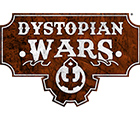
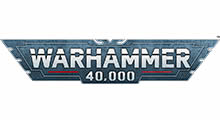










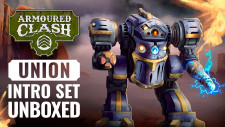

![How To Paint Moonstone’s Nanny | Goblin King Games [7 Days Early Access]](https://images.beastsofwar.com/2024/12/3CU-Gobin-King-Games-Moonstone-Shades-Nanny-coverimage-225-127.jpg)


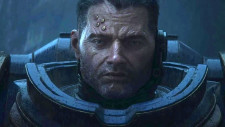





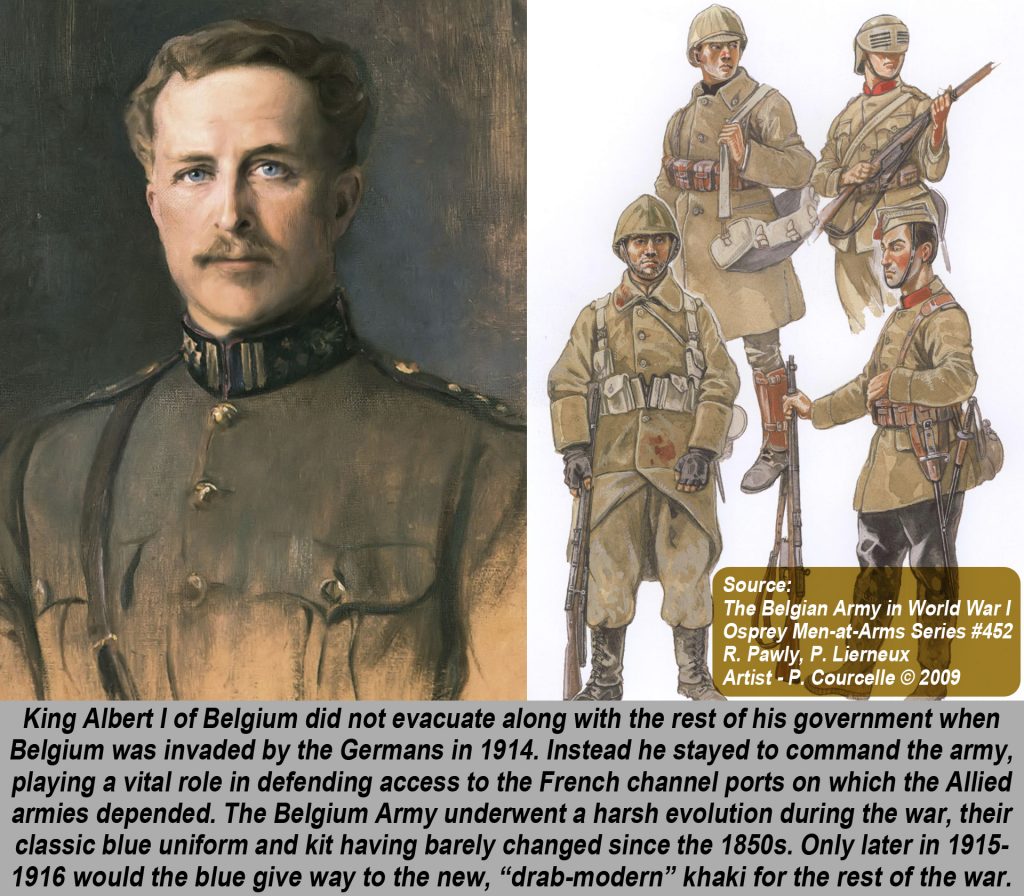
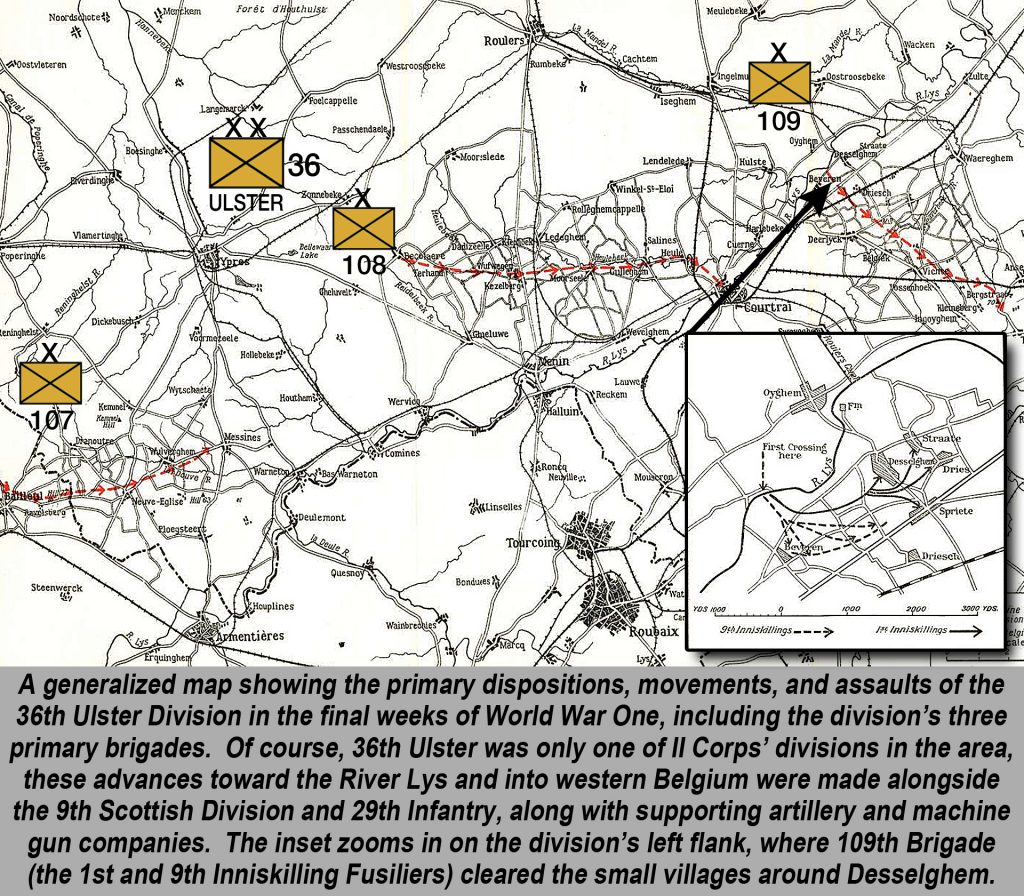
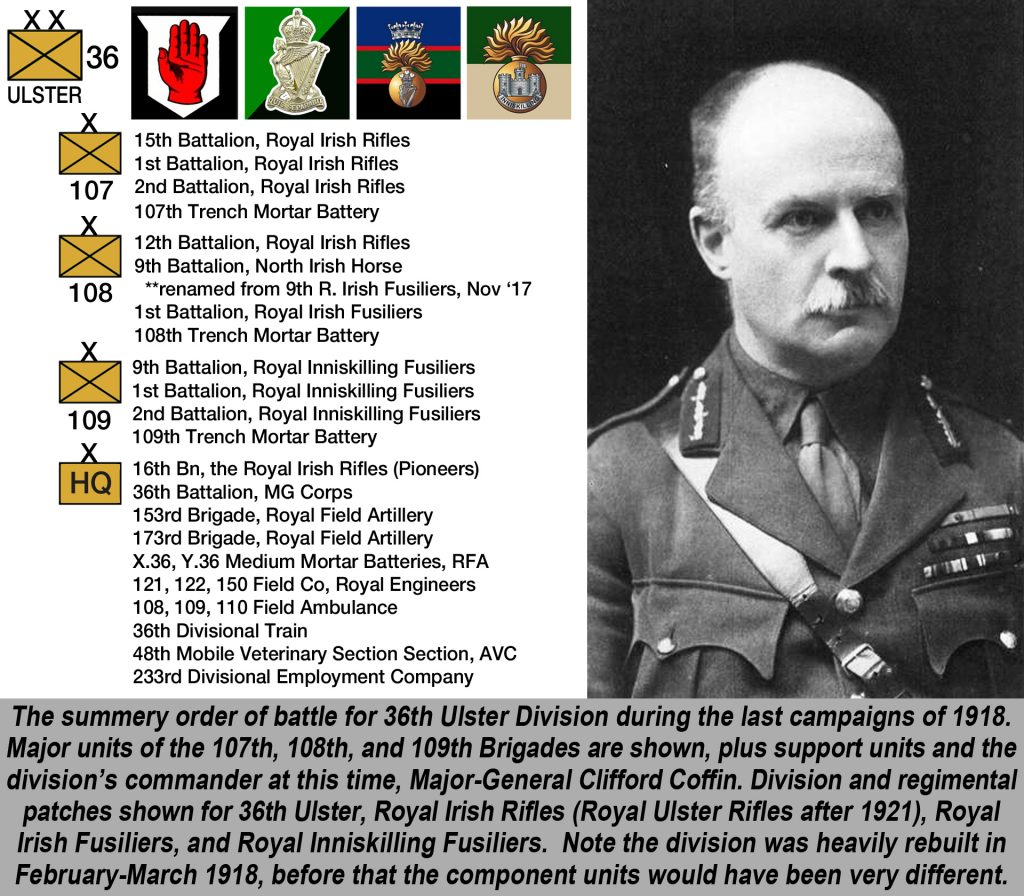
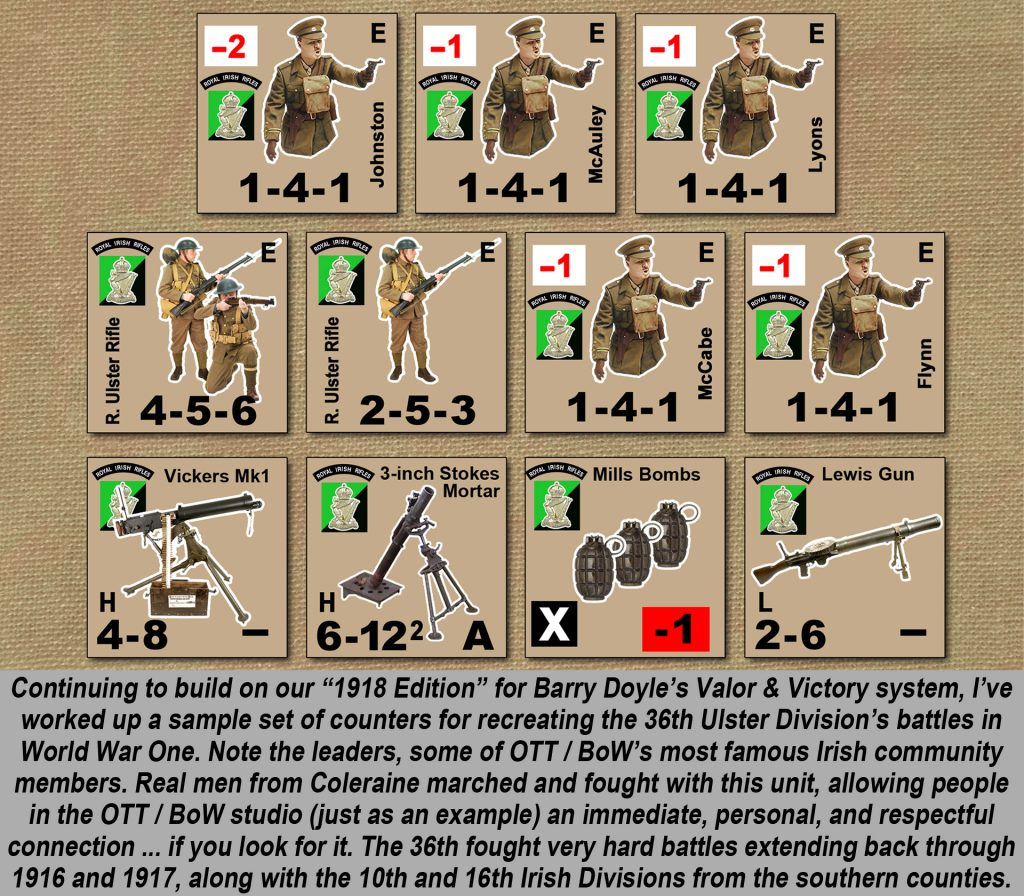
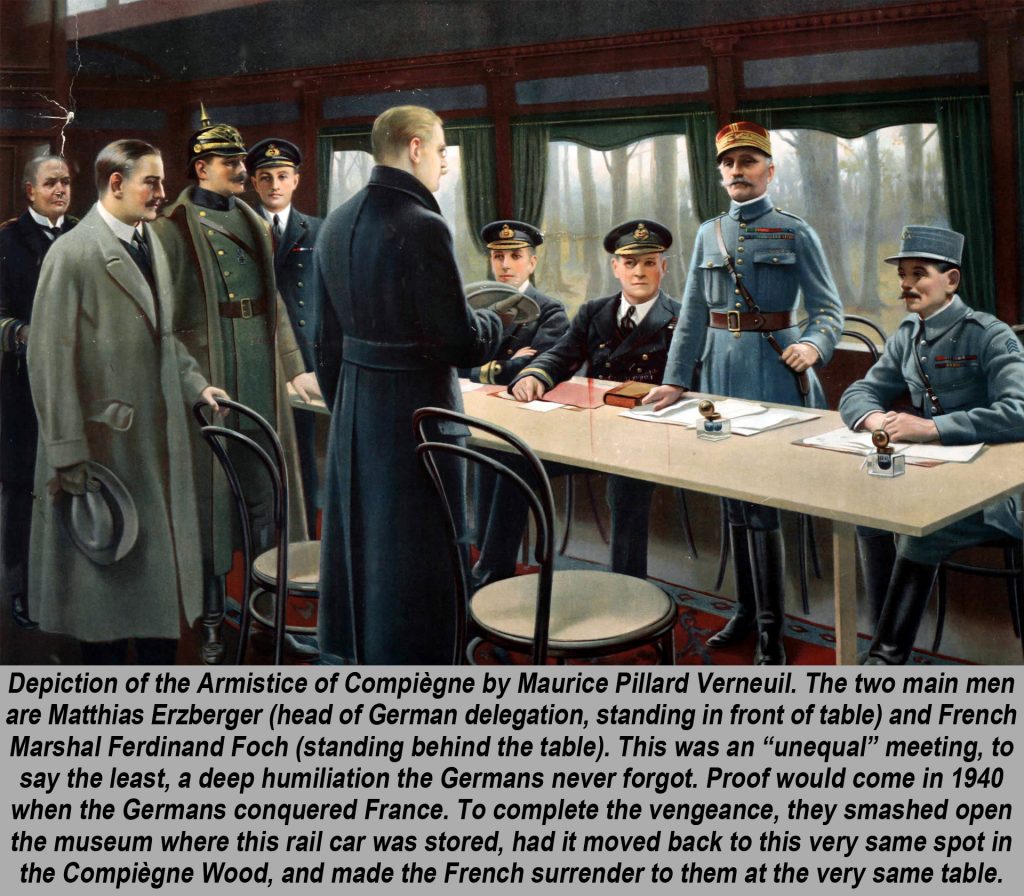
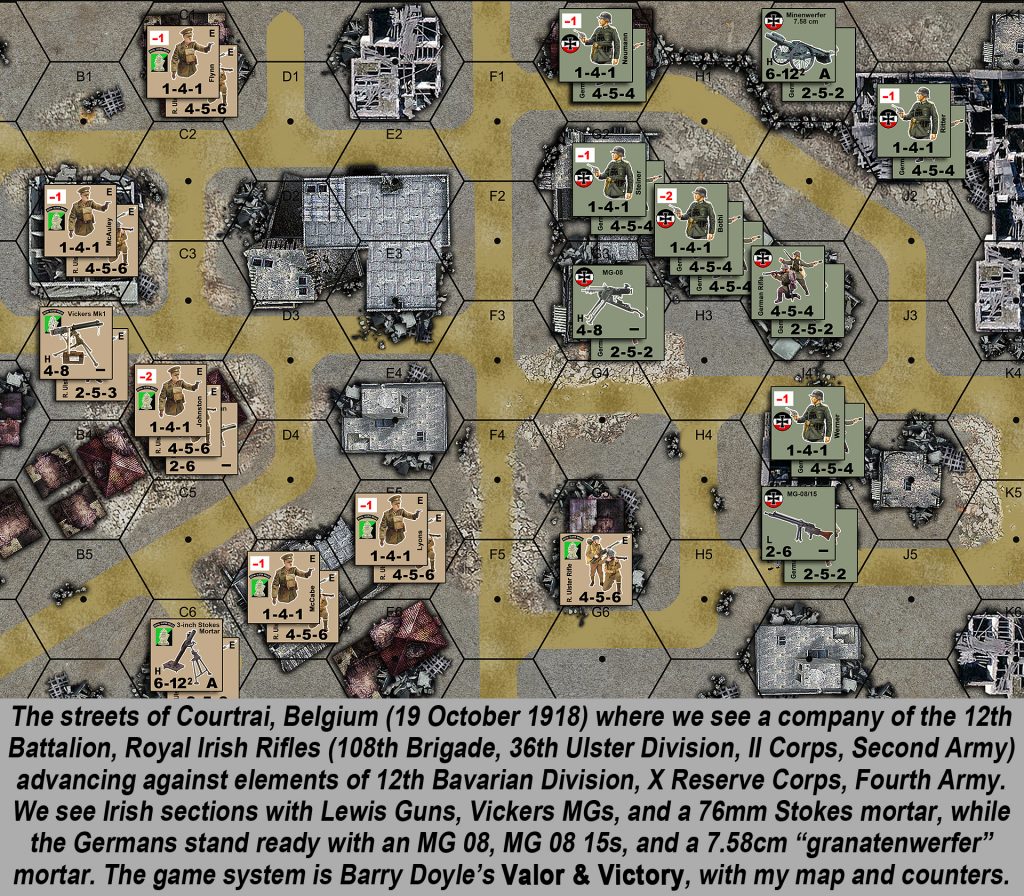

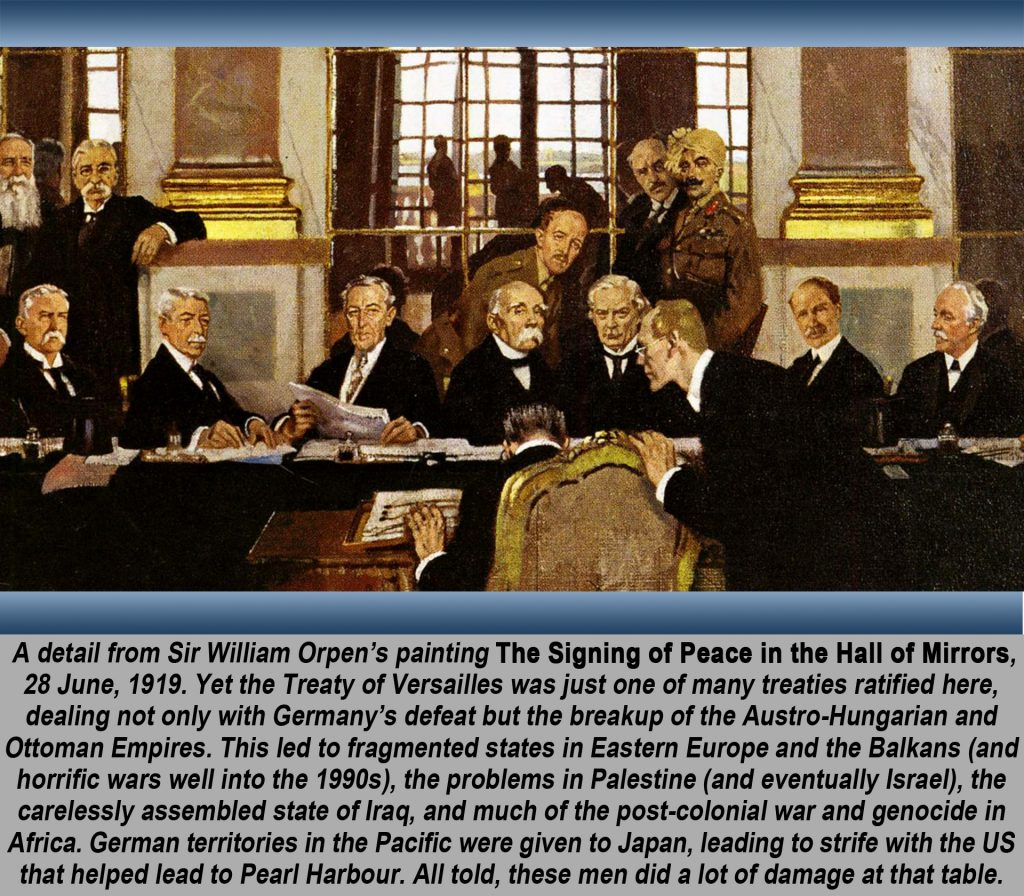
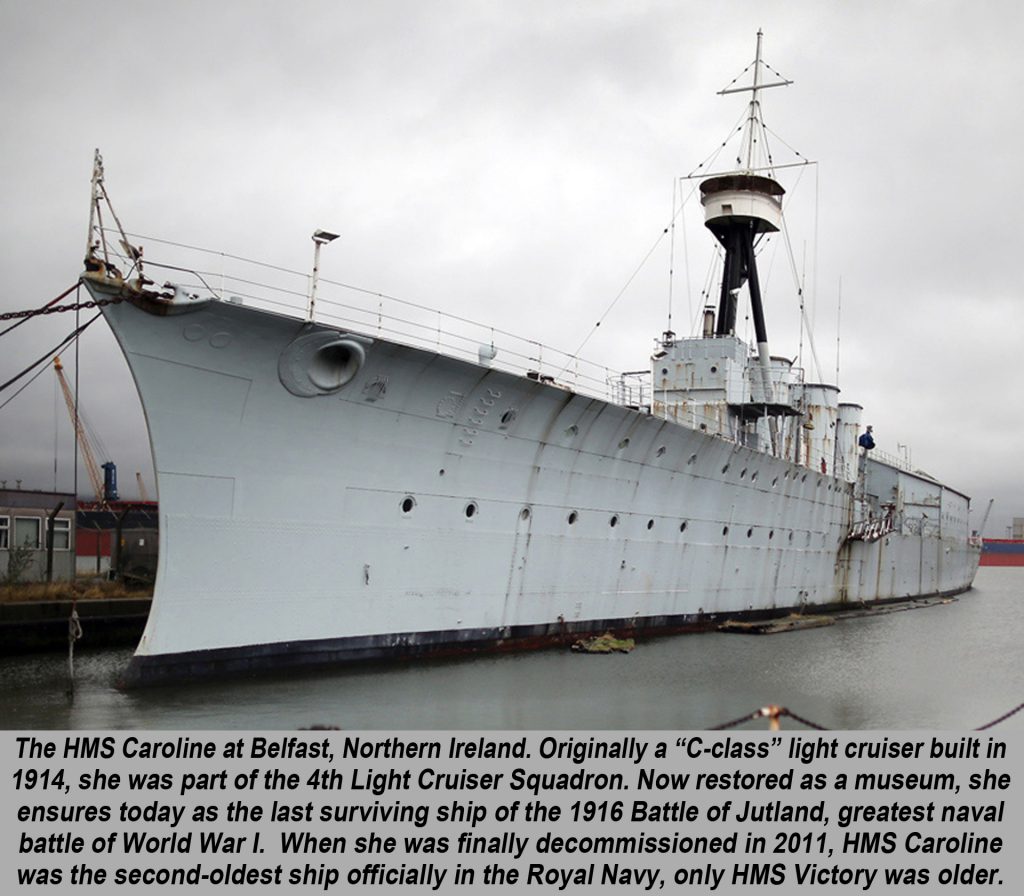
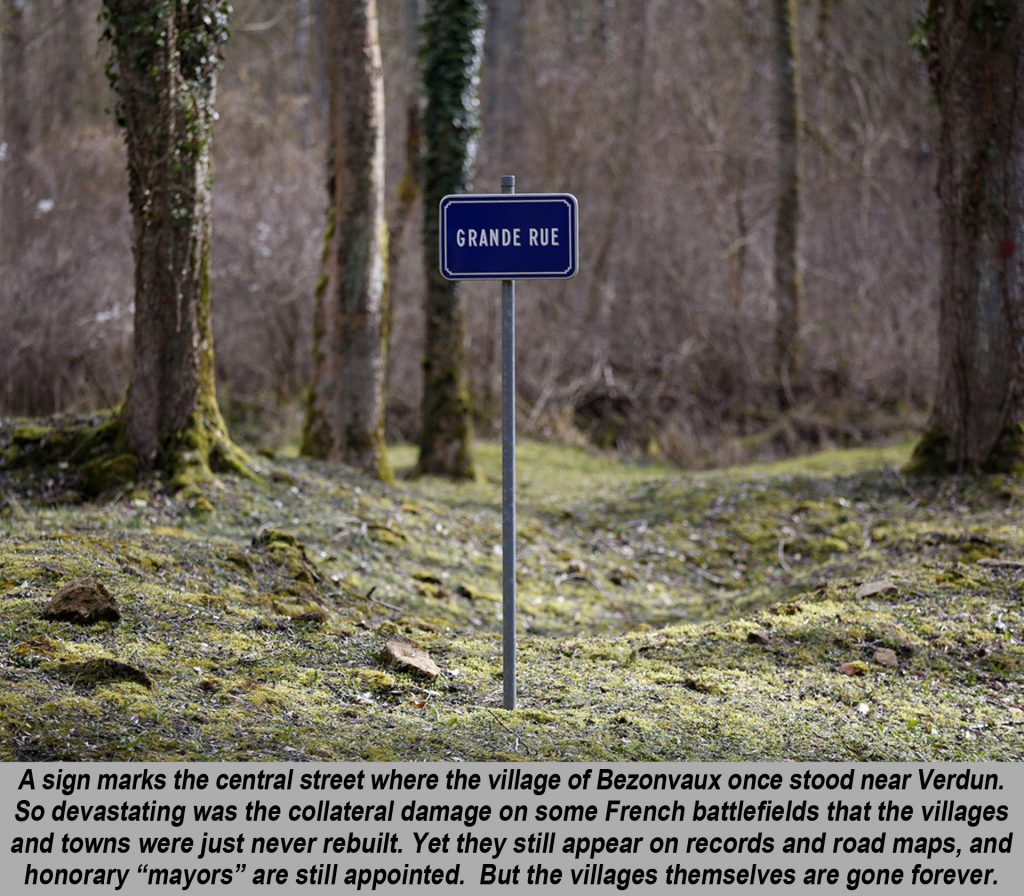
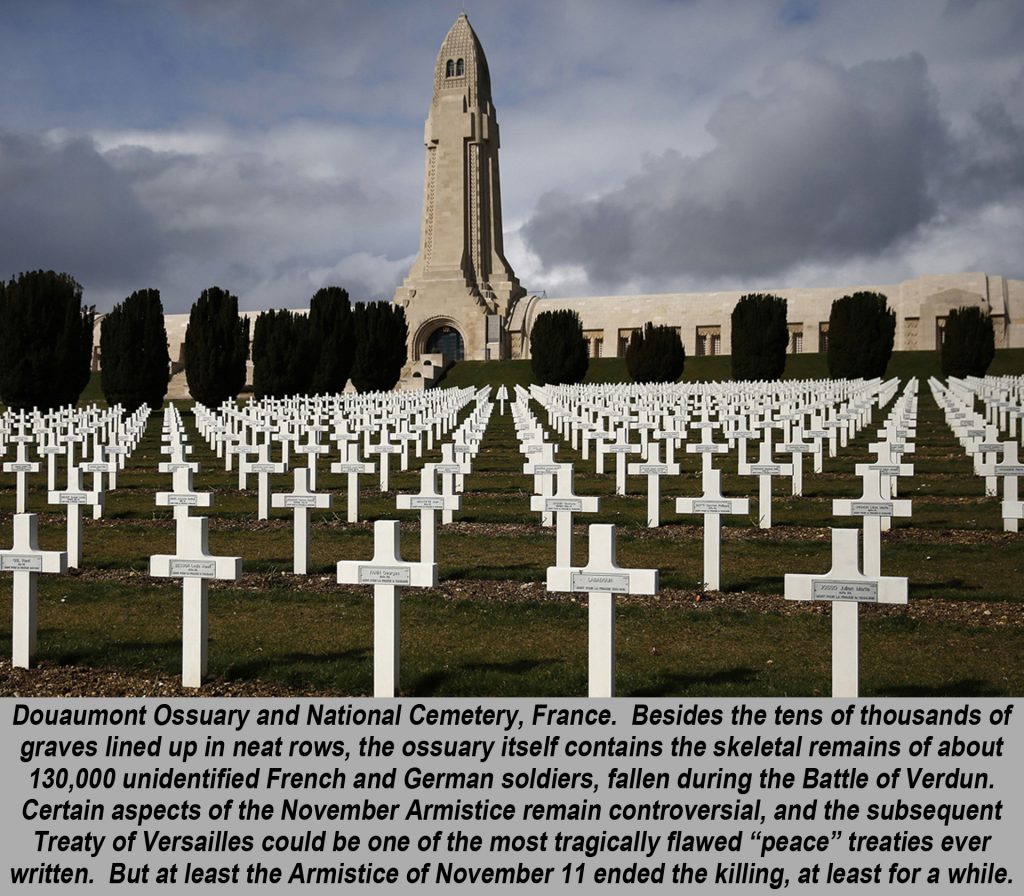


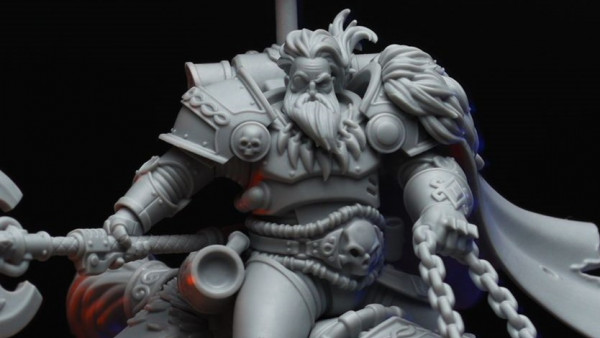


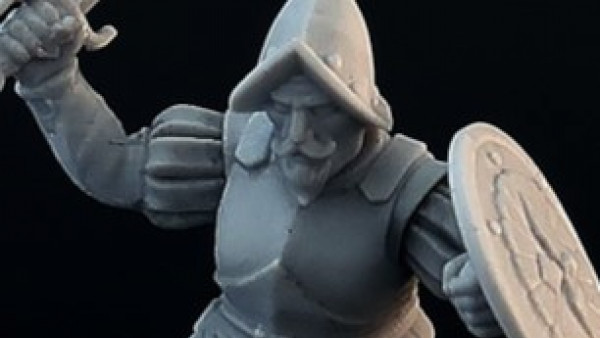

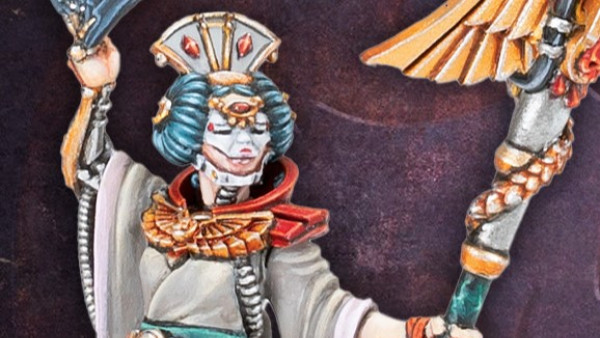

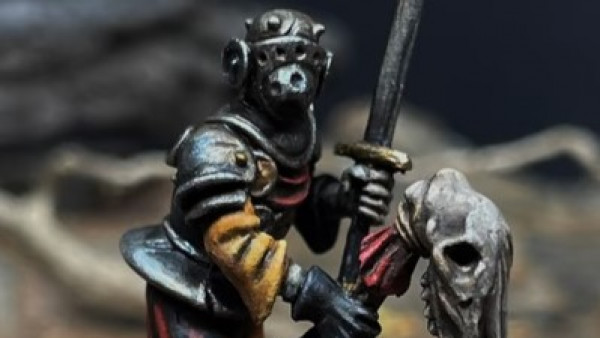


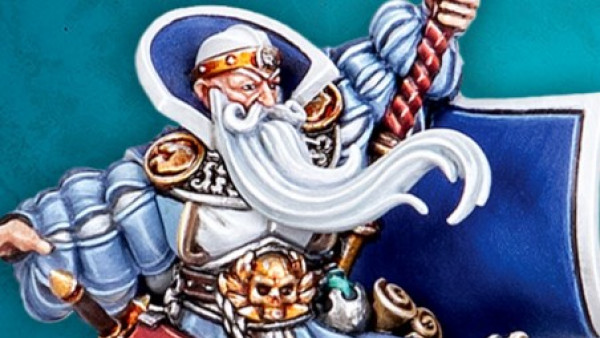

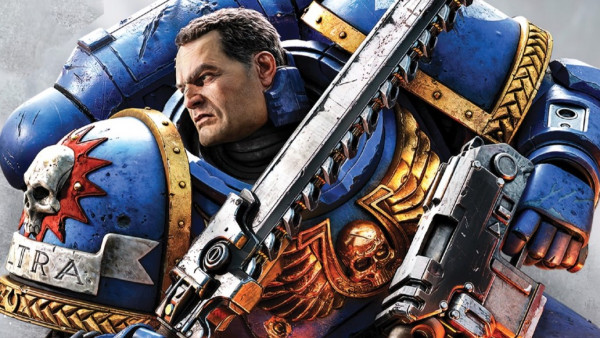

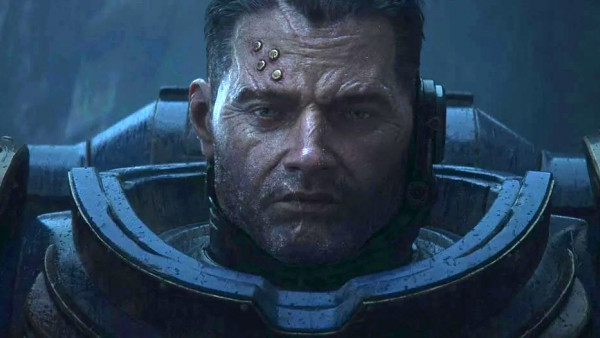

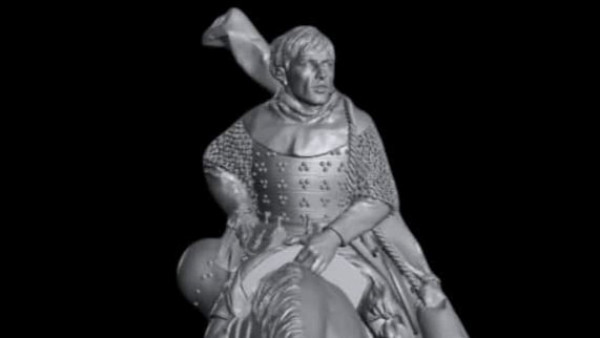
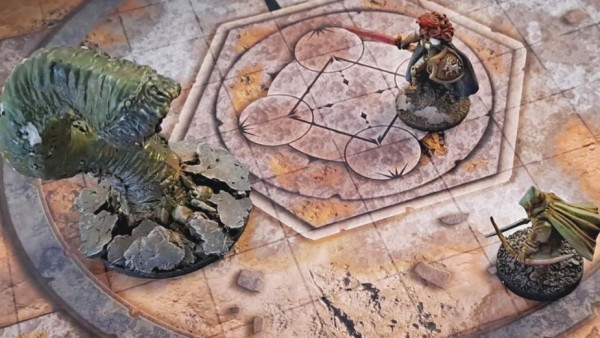

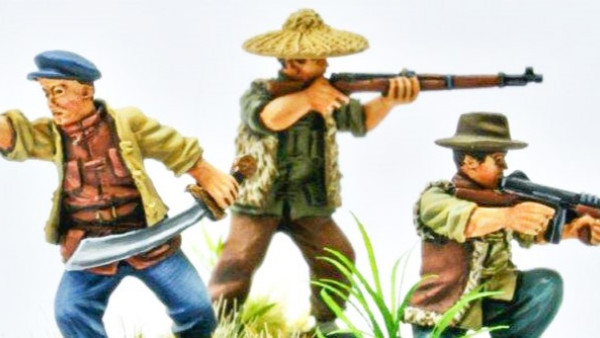

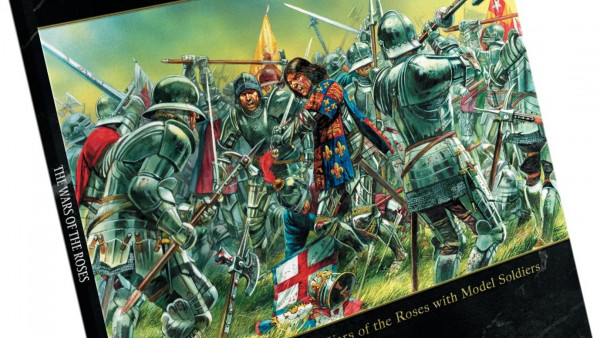
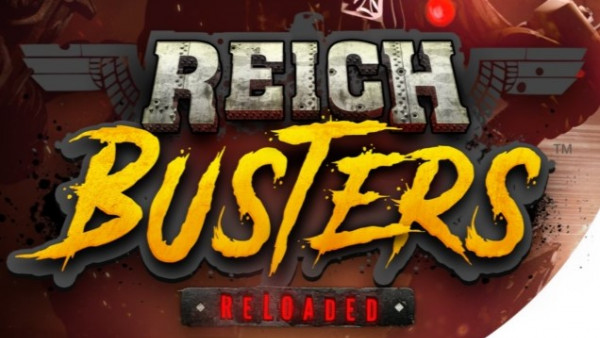
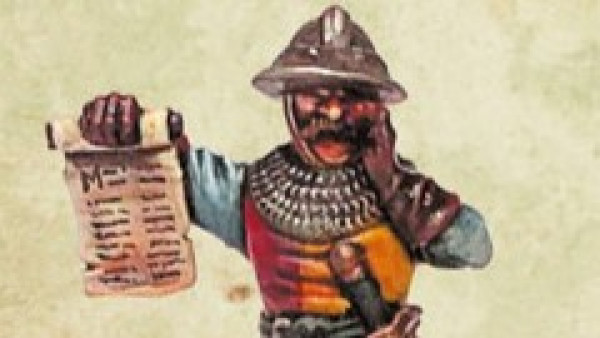
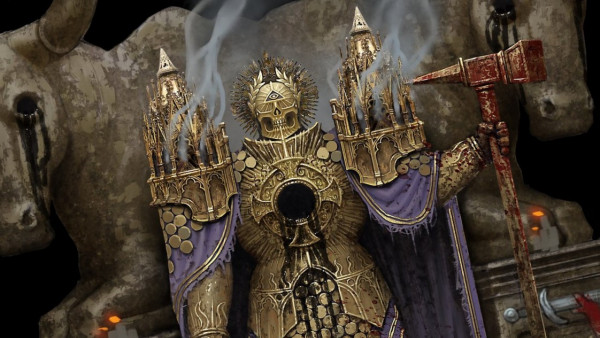
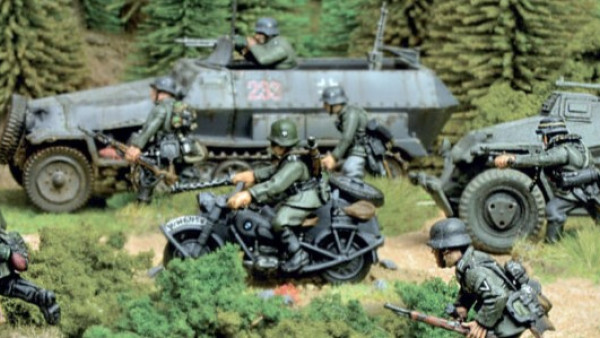
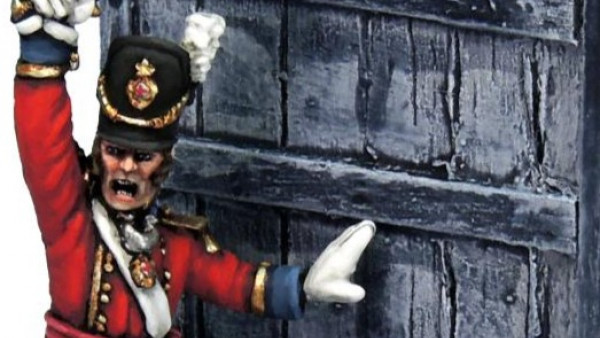
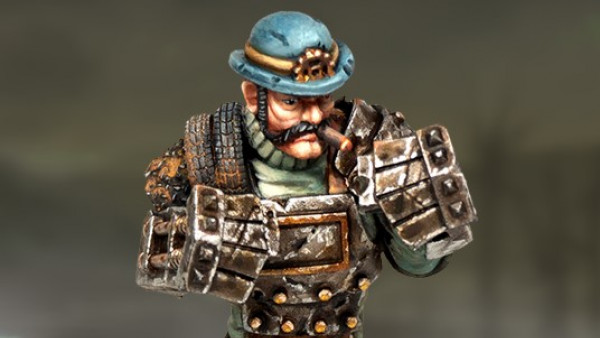
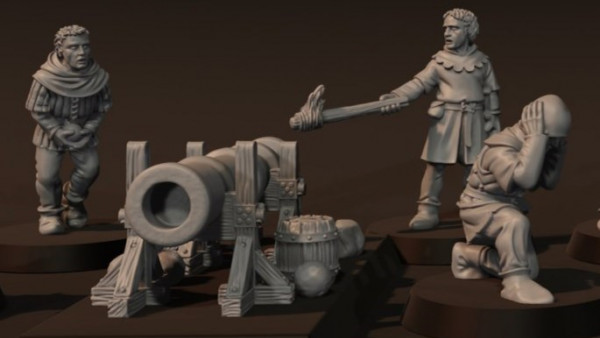

Thanks for the series @oriskany ,its hard reading knowing that there were those deaths that were just so pointless and could have been avoided. Such is the nature of man though i guess.
Its also interesting to see that the terms of the end of WW1 effectively started the second. I always find it amazing that with all the history we have the same mistakes happen time and again and that emotions have such an impact on these big decisions.
I have the remastered WW1 film footage to watch tonight so thank you for some context.
Thanks for kicking us off, @civilcourage , and thanks to Ben, Lance, John, Justin, Gerry, and the whole team for all their support in helping this article series get published and supported. The “goods news” in the theme of this article series is that even wars like this do eventually end. And not all the mistakes are repeated over and over. After World War II, not only did the Allies make sure that Germany was thoroughly and completely defeated (leading to no “stab in the back” myths, etc.), but also invested tens of billions through the Marshall Plan to rebuild… Read more »
a fascinating and at times heart wrenching article series, but one I feel was required to mark such a significant anniversary of the war to end all wars. I’d like to make a couple of points Augustin Trébuchon was not the alone on the day of his death being misrecorded. No French casualties are listed for 11.11.18, every death is recorded as happening on the 10th, no reason was ever recorded for why they deliberately changed the dates, it may have been a morale issue, or to hide the futility of the losses, but regardless it must be a bitter… Read more »
Thanks very much, @avernos – not only for the comment but for all the support and the two great interviews. 😀 I didn’t know that the French Army initially lied about ALL the deaths that day. I would have assumed they lied about all the deaths in that original attack (91, according to what I’ve found). As we say in the article series, as easy as it would be to blame the senior commanders for the deaths of November 11 (and they are in fact responsible for many of them – Marshal Foch especially), some of them were out of… Read more »
A very well written and researched article. Thank you for taking the time and trouble to produce it.
Thanks very much, @gremlin – and no worries at all about the “time and trouble.” 😀 After the “Kaiserschlacht” series earlier this year, I promised the community we would come back to the Great War at least once for a look at the last days. It almost got by us, with all the noise and energy surrounding the Bolt Action Boot Camp of late September. So we were rushed a little, we only had three articles, and of course I don’t have any miniature armies for the period. That why we also have hex-and-counters … 😀 and I felt this… Read more »
On Facebook today I was looking at the original message sent to the Inniskillings on 11/11/18 and the message was received at 07.15hrs
Awesome, detail, @torros – thanks! 😀 Yeah, it takes a while to get the message out to all these units, millions of men across 500 miles of front (on both sides and probably in a dozen languages), and of course for a cease-fire to work, it has to all happen at once. You can’t have one side observing a cease-fire and other side NOT.
@torros found the original message received by the 9th Inniskillings Fusiliers / 109th Bge / 36th Ulster Division (11 Nov 1918) – I asked if I could post it here:
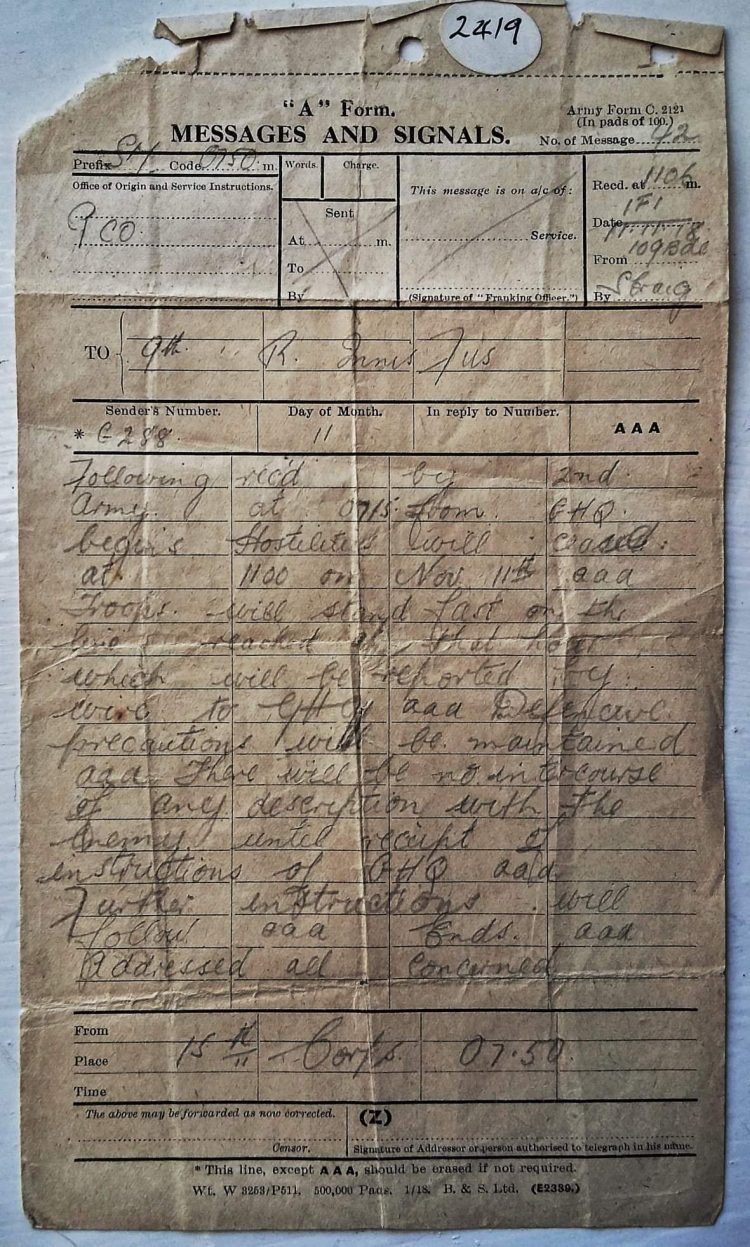
WHAT?! Only three articles??? What sin is this?
In all seriousness, this was a perfect end to the series, “The futility of the last hours of a war”. You truly honored the memory of ALL those who fought in this “War to end all Wars.
One question, do all wars have these pointless last few hours of combat or are more resent wars a little more clear cut/immediate with the cease fire?
Thanks, @gladesrunner – and to answer your question, I would actually argue the opposite. World War II had a somewhat sloppier ending, with different parts of the German army surrendering at different times. Some parts of the World War II in Asia didn’t end until September 9 1945- despite the Japanese announcing their surrender on August 14 and the official surrender signed on the deck of USS Missouri on September 2. I’m talking about the Chinese-Japanese part of the war, which (in an interesting connection to this article series), they decided to schedule for 9:00 AM. In this way, it… Read more »
Their are stories of people being found on Pacific islands years after the war still fighting thinking it hadn’t stopped?
Oh, absolutely. I think the last Japanese soldier to officially surrender was found in the early 1970s somewhere.
Somewhere in the Philippines I think
I’m honestly unfamiliar with the details.
I read about this. They even had to get an officer from Japan to order the man to stop fighting, because he would stop without a military order. He didn´t (or couldn´t) believe the war was over.
“Thanks for the update! So the war’s finally over, eh? Outstanding! When did America surrender, exactly?” 😀 😀 😀
A nice consist series of articles on the bloody war to end all war’s but unfortunately didn’t @oriskany
All too true, @zorg – I always find the title “war to end all wars” bitterly ironic since it couldn’t possibly be more inaccurate, the end of World War I positively lit an unmistakable fuse to World War II. In some ways it’s actually amazing it took so long.
A wonderful article, as usual. I appreciate you raising awareness like this at a time when knowledge of the great lessons and sacrifices of the 20th century seem increasingly forgotten, or even worse, ignored. My only constructive criticism is that this article, more than any of your others, reads a little teleologically. While some implied connections are more commonly accepted, that the Treaty of Versailles “leads to” the Second World War, for example, others are far more contentious. It can be tempting to explain modern issues in Israel or the Yugoslav Wars as being caused by a bad stroke of… Read more »
Thanks for the comment, the support, and the feedback, @greyhunter88 . I’ll be honest, I admit that in interviews I’ve made some rather broad assumptions for the sake of saying something dramatic (“if there had been no Battle of Saratoga, there is no D-Day at Overlord) … but for this article series I’m sticking to my guns. To take the conflict in Yugoslavia as an example (I won’t plod through them all) – the most direct and egregious causes of those wars … do not stem from the fact that Bosnians, Croats, Serbs, Montenegrins, or Macedonians don’t get along. Lots… Read more »
Thanks for the great reply! It’s so refreshing to have genuine, interesting dialogue about history in my post-University days, that I’d almost forgotten what it was like. In this case, I should explain myself. In attempting to be brief, I don’t think I properly illuminated my critique. My concern was more with form than content, to be honest, and as you’ve even acknowledged yourself, much of the time you’ll make overly broad generalizations for the sake of drama and flair. This is an article about the end of World War 1… naturally you’re well-allowed a mandate to emphasize the importance… Read more »
No worries at all – @greyhunter88 – completely uncritical replies start to get a little vanilla after a while. “Great article! Thanks a lot! … Great article! Thanks a lot! … Great article! Thanks a lot!” 😀 When it comes to “x” led to “y” being a statement of causation … yes. I agree, and it was intentional, and I still stand by it. Perhaps a more accurate statement would have been “x led to y1 and y2 and y3 and y4 and y5 and y6 which eventually led to z” … or in the interest of brevity (always a… Read more »
here is something for both of you to consider, the first world war was started due to a rush for oil. Discuss. 😉
There goes @avernos – trying to stir up the pot. 😀 😀 😀
nothing is ever simple. If it was we wouldn’t be interested 🙂
Hahaha, I’ll be honest… I even admitted that my criticism was mainly rhetorical/grammatical! I suppose at the initial moment I made the comment, I had gotten a bit of a flippant vibe from the caption. In the way you claw your face off when people say “Jews and Arabs have always been fighting!”, I worried you were maybe being slightly reductive about the complexity of the situation. “Ah, forcing those people into one country made them fight!” I realize now that I was merely doing you the disservice of underestimating your familiarity with the topic. I was thinking, “Well, that’s… Read more »
@greyhunter88 – “…I worried you were maybe being slightly reductive about the complexity of the situation.” I certainly hope not. If I ever seemed that way, it certainly wasn’t my intention. “… but I think you’ve certainly made a strong case for ‘That is the strongest reason why they killed each other.’” I hope it’s clear I’m only talking specifically about the 1990s Wars in Yugoslavia / the Balkans. That’s the only small part of that conflict I pretend to even have a passing familiarity. Modern War magazine ran an article “War by Television: Kosovo 1999” – Issue #9 (Jan-Feb… Read more »
Very true, @avernos – if we liked simplicity we would play checkers instead of wargames. 😀
—““…I worried you were maybe being slightly reductive about the complexity of the situation.”” “I certainly hope not. If I ever seemed that way, it certainly wasn’t my intention.”” Not at all! It was just a knee-jerk response on my end. You definitely don’t come across that way. I had just never heard of so many ills being laid on the doorstep of those treaties all at once, so I suppose my gut response was to say, “Wait a minute! It can’t be that simple!” —“I hope it’s clear I’m only talking specifically about the 1990s Wars in Yugoslavia /… Read more »
No worries at all, sir. The idea that OTT / BoW is interactive and the team actually engages with the community was the first and biggest factor that drew me to the site back in 2014. We can’t just be talking heads on a computer monitor. 😀
A fine closing piece to another great article series, respectful and thought provoking. (and a fitting finale to a year of graft for a historical editor, thanks Jim). There was an interesting question asked during the BBC coverage of the Cenotaph service yesterday about when should we stop commemorating WW1 as other wars in history are no longer venerated like WW1. One of the talking heads answered that it is essential to continue as current history is seeing a polarization of communities and opinions due to the effects of social media and that the lessons of history are essential to… Read more »
Thanks very much, @damon – Stop venerating WW1? Because other wars are not venerated? While I can acknowledge the disparity, I think the solution here is not to remember WW1 less … but remember other wars more. Who knows, maybe we’ll finally stop having them. 😐
that’s an interesting point about the veneration of WW1. I remember an article a few years on the 70th anniversary of the end of the second world war when a journalist mentioned being in a car with two German journalists while the radio was giving ongoing coverage of the preparations to mark that event. and at that time he remarked that it has to have an end or else they (the British) may reach a place similar to the situation in Northern Ireland and the Boyne were it has become a dividing mark of triumphalism rather than commemoration. I think… Read more »
Objectivity and presenting both sides of a given topic (assuming there are only two, there are probably dozens) with respect and fairness is probably the best precaution to the triumphalism mentioned. That said, even that can be overdone. It sounds great to say “present both sides with respect and fairness” – but what if both sides don’t deserve respect and fairness? An extreme example, I know, but just to make the point: Would we want to present the history of Auschwitz with “respect and fairness” to both sides? 😐 Probably not – or even if we did (i.e., some of… Read more »
eloquently said Jim.
Thanks, if you can say that a sentence with five slashes in it is “eloquent.” 😀 😀 😀
Just not “elegant.” 😀
true, but elegant language can say very little in a long and florid speech, while eloquence can be brief yet just, if not more, persuasive.
Brevity being “the soul of wit” and all that. 😀
That’s extremely interesting, actually. In Canada, for example, we don’t venerate the War of 1812 (outside of comedy songs and to make fun of our American friends), even though it’s more recent, chronologically, than the American War of Independence, which is still very much remembered. Now, obviously that war is integral to the American spirit and nation, but is the War of 1812 any less significant to the independence of Canada? In an alternate universe, could it not, for example, have led us to become part of the United States? The battles leading to the subjugation of French Canada are… Read more »
Another great post. 😀 “In Canada, for example, we don’t venerate the War of 1812 (outside of comedy songs and to make fun of our American friends) …” Oh man, we certainly deserve it for our performance in 1812. 😐 “In an alternate universe, could it not, for example, have led us to become part of the United States?” Well, the Americans tried a two-=pronged invasion of Canada in 1775-76, and failed, and invaded Canada no less than three times (or at least from three directions) during the War of 1812, and all failed. I was kidding around with Canadian… Read more »
” Okay, now I need to open a technical support ticket with OTT / BoW . . . so I can put +100 votes on this one comment. ? ? ?” Hahaha!!! I know, right? I wish it weren’t so. The Plains of Abraham and all that were indeed what I was referring to. Folks in Western Canada do tend to be better-versed in our history in general, so I’m not surprised to hear that. Though I might be cheeky and suggest that your friends are probably more likely than average to know about military history. 😉 World War 1… Read more »
Someone mentioned the French Indian War? I must comment! It’s strange what people do and don’t remember. The War of 1812 is literally known as “The Forgotten War” (although a lot of people are also using that name for Korea). I mean no one came out of the War of 1812 looking good with the exception of Andrew Jackson. The American’s had their Capital burned down, the President was riding around on horseback begging for volunteers, the Battle beforehand was such a rout that it’s know as the “Bladensburg Races”, a US Fort commander was so drunk he had to… Read more »
@elessar2590 – “Someone mentioned the French Indian War? I must comment!” Yep – there it is. I still remember the article series you wrote almost in tandem with the first American Revolution series @chrisg and I were doing back in 2015. I always though French “Horizon Blue” had to do with they thought that color would make the troops tough to see as they were advancing towards a trench. Next time you have a Fanta and you wonder why it tastes a little different from Pepsi or Coke … this was a German company in WW2 and when the Americans… Read more »
@oriskany speaking of Fanta they did a promotion a few years ago for their 75th anniversary. Basically they put out “original” Fanta made the same way it was made in the early 40’s and used the slogan “Remember the good old days” or something to that effect. It did not go well. https://www.youtube.com/watch?v=qAJXHPaWUWw The Sky Blue colour got “retconned” by the Military as an intended colour. France was pretty good at covering their screw ups in WWI like the “mutiny” or the fact that they had the best artillery in Europe but didn’t really produce any shells for it. In… Read more »
@elessar2590 – Just checked out that Fanta commercial. Wow. Just … Wow. How FUCKING tone-deaf can you possibly goddamned be? 🙁 🙁 🙁 🙁 Moving swiftly forward … Yeah, the whole “horizon blue” thing was just what I read. If memory serves, the exact verbiage of the text was something like “the idea was that this color would be harder to see” or “it was issued on the pretense that this color would be harder to see” etc. I didn’t know it was an intentional “ret-con,” but it’s pretty clear it didn’t work as troops don’t wear light blue in… Read more »
They did have the best artillery piece in the war which was the quick firing 75 which could fire 15 rounds into a target area without having to be realigned. The French also managed to make 200 million rounds for them during the war
We approximated this quick-firing French artillery with additional “heavy barrages” in our trench-heavy uber-game in Valor & Victory. Yes, yes, I know these 75mm aren’t usually considered “heavy” artillery. In the context of Valor & Victory “light barrages” are battalion-level mortars, “heavy barrages” are any kind of howitzers you’re likely to see in a company-sized firefight.
@greyhunter88 – I know next to nothing about the French and Indian War, at least the parts in what is today Canada. I’m much more familiar with the American invasions of 1775-75 under Richard Montgomery (through Montreal) and Benedict Arnold (up the Kennebec River, through the wilderness of Maine, and then the Chaudière River to the St. Lawrence). Done quite a bit of writing on this invasion, as it leads to my favorite theater of the American Revolution – the Northern Theater, including battles like Saratoga, Valcour Bay, and another battle named … Oriskany. 😀 And of course, War Plan… Read more »
“And of course, War Plan Red, the contingency for the US to invade Canada should Great Britain be forced to cut a deal with Nazi Germany.”
Wow… Never knew about that one. “War Plan Red” is a great name, though. Kind of a scary thought, though. I am very glad we are still (trade agreement disputes notwithstanding) good allies.
Sounds like it could make for a solid weekend of asymmetrical “What-If” gaming, though.
Yeah, @greyhunter88 – all the American war plans in the 1920s and 30s were named for colors. Most infamously was War Plan Orange, contingency for plans for war against Japan which of course became all too true. Turns out this was really part of a larger plan for war against the United Kingdom and ALL its holdings in the Western Hemisphere. There was another plan: War Plan Crimson, specifically for war against only Canada. Not to be outdone, the Canadians had “Defense Scheme No 1.” Canadian military officer Lieutenant Colonel James “Buster” Sutherland Brown developed an earlier counterpart to War… Read more »
A really good read @oriskany I did go through all of the articles in this series.
Awesome! Glad you liked them. Good to “see” you on the site again! 😀
Just finished watching the Peter Jackson film. Can’t honestly find the words to say how astonishingly good it is
myself and @johnlyons were saying the same thing last night. A picture really does paint a thousand words.
Awesome, @torros and @avernos . I’ll have to watch it when available here.
When the screen widens and switches to the first colour footage I did a silent WOW looked at the wife and she was doing a silent WOW at me
I’ll definitely keep an eye out for it then. Sounds like its a big improvement on the World War One in Colour series narrated by Kenneth Branaugh.
I reckon they spent a lot more on the Peter Jackson one. Going to watch the making of tonight
🙂
Great series, thanks for taking the time to put is together.
No worries at all, @hairybrains . Like I was saying above, this was a date I definitely didn’t want us to miss.
@oriskany Thank you for another excellent series of articles. Also, thank you the BoW / OTT Community for the always fascinating and ever respectful discussions in the comments. Here is my contribution – with apologies in advance for the wall of text. As I am sure we will all know – or can guess -,the last soldiers to die in combat, before the Ceasefire came into effect at 11:00am on 11th November 1918, were by no means the last soldiers considered to have died in the First World War: many of the casualties of the fighting in 1918 – and… Read more »
That’s an amazing and very moving story, @aztecjaguar – I especially think it’s great that this British / Commonwealth cemetery has survived in Germany, through multiple changes in government, the hostilities between Germany and Britain in 1939-45 and (by the sounds of it) the Cold War immediately afterward (you say south of Berlin, so I’m assuming this was formerly in East Germany, unless it’s in one of the former zones of West Berlin). And if what you say is true: “as I was reading all your articles about the battles of 1918, I felt motivated to finally find out more… Read more »
To answer your questions @oriskany : yes, the British and Commonwealth War Cemetery I visited was located in the former East Germany, south of the Allied sectors of West Berlin. There was a stone engraving to the right of the entrance, with an insignia of crossed British Union and Soviet Union Flags and the following inscription (in English and German): “From 1946–1990 this British Military Cemetery was visited regularly by members of the British Commanders-in-Chief Mission to the Soviet Forces in Germany (BRIXMIS) and maintained with the help of the local Protestant Diocese on behalf of the Commonwealth War Graves… Read more »
Awesome! Well, if we played any small part at all, that’s great. No matter the case, great story and well done. Visiting some British war cemeteries in Normandy (Bayeux, for example), I was always struck by how many of the graves were unknown. “Here lies a British soldier, known but to God” over and over. There’s always some of that, and of course the Germans had thousands of stones marked only “Ein Deutsches Soldat” – but that’s understandable since they didn’t control the battlefield after a given engagement. The Soviets (or East Germans) allowing a WW1 or WW2 cemetery to… Read more »
In WW2 the Germans and Allies had a sort of unwritten agreement not to fight round the WW1 graveyards. The only exception was the Villiers Brettenaux memorial where the Germans destroyed the statue of an Australian bayonetting a Prussian Eagle. In WW2 the Gestapo seem to be quite active round Ypres and I’ve always wondered if it had something to do with Hitlers involvement in the slaughter of the innocents. Staying in WW2 during the occupation of Belgium was the only time the last post wasnt played at the Menin Gate.During the liberation of the town by the Poles and… Read more »
See, I always thought Hitler’s regiment (16th Reserve Bavarian Infantry) was further south around Soissons / Marne, where he won his Iron Cross in July 1918). I guess they were moved around?
He was at the he first battle if Ypres and visited Langemark cenmetary in 1940. Of all the places I’ve been Langemark has to be the most depressing
Cool. They must have transferred his unit for 1918, then.
In the 1st Battle of Ypres his unit went into the line with 3600 men and came out with 611
😐
I meant to add this earlier that I think the CWGC commission do a tremendous job with the graves all over the world.
Its a pity that the government and the
army survivors didnt treat the survivors with the same respect when they came home
Veterans never get a fully fair shaken when they get home, it seems. American veterans were outfight fired upon in the streets of Washington DC when they marched for their pensions during the Depression. Who gave the order? Douglas MacArthur. A real American “hero.”
Great Series.
Have you got a link for the Valour and Victory download?
Also have you released your WWI conversion? I think I’d like to dip my toe into this whole Hex and Counter thing 🙂
@elessar2590 – Here is the link for the official Valor & Victory wargame by Barry S. Doyle. http://www.valor-and-victory.com/ The “1918 Edition” I’ve been tinkering with … (massive battle report / game in progress, by the way, including new tank counters!) https://www.beastsofwar.com/project/1288632/ … there really isn’t too much to it. We’re trying to keep the rules as close to the native set as possible. And outside of some new units, maybe a few tweaks on terrain (deeper trenches, rubble, craters), and changes to how artillery fire missions work (no radios) – it really is quite basic. The Vietnam update was MUCH… Read more »
Thanks for the final installment of this article and what will be the last WW1 content for awhile. I read your follow-up comments you made to my comments in articles 1 and 2. I completely agree with them and thanks for taking the time to answer them. I was about 15 when I first read about the assaults on the morning of November 11th. Why plan them at all when the planners were fully aware of the significance of 11am. Why fight for and take something that they could freely walk into in just a few hours time. It has… Read more »
@jamesevans140 “Thanks for the final installment of this article and what will be the last WW1 content for awhile.” How do you know? 😀 Battlefront is releasing new FoW Great War content next year, PanzerBlitz always had a 1919 theoretical tank combat module. In all seriousness, though, I think I’m ready to lay down the Great War … at least once I finish the Valor & Victory playtesting project still in progress. Which reminds me, check that out when you can, the Australians (and British tanks) have cracked the German trenches at Hamel. They’ve taken terrible losses, and lost three… Read more »
Wilson always had the “well if you want your money back, you WILL!..” card played against him, while FD;R had the “if you want our lend lease you will.. ” to play against this Europeans in round two. I also believe FDR seemed to know what life was really about on both sides of the pond. Wilson seemed to be more of an idealist with a Victorian /Bible overtures. From what I gather from the documentary about him, Wilson seemed like he did not do any favours for himself either. It seemed to all parties that once he latched on… Read more »
@jamesevans140 – “I will gladly check out your project later tonight.”
If you want. Honestly it’s complete and I’m now shutting it down.
No one seemed terribly interested.
Once again into the fray my friend, always like what you get your teeth into.
For people who always thought the first world war was only fought from trench to trench.
Thanks very much! And yes, we keep changing topics. We always try to keep things new and interesting.
Much has been said and written so far, so I try to be brief. The assassinated German armistice delegate was Matthias Erzberger, right? Commander Coffin: What a name for a military commander. If he says “I´m with you, my men!” this might be a bit awkward. Right-wing parties had existed in both Germany and Austro-Hungary way before the First World War. The NSDAP had been DAP after 1918, Deutsche Arbeiterpartei (German Workers Party). Hitler added National and Socialist in order to make the party more attractive for a wider spectrum of society. The ossuary at Verdun always reminds me of… Read more »
If you look up Kaiser Wilhelms quotes just before,during and after the war it sounds like another German leader 15 or so years later
Ludendorff-Hitler connection, later to end very badly for both.
@jemmy – Okay, I will try to answer as always. “The assassinated German armistice delegate was Matthias Erzberger, right?” I don’t know. “Commander Coffin: What a name for a military commander.” He was assisted by his chief of staff, Brigadier Ulysses B. Deadmeat, his operations officer Colonel Skeletor, and his Chief of Intelligence Major Grim R. Reaper. 😀 “Right-wing parties had existed in both Germany and Austro-Hungary way before the First World War.” They do in all countries. The KKK marched in the US 20,000 strong in D.C. as late as the late 1920s. I wasn’t trying to say that… Read more »
Contradiction Day was a challenge to say everything you mean “the other way round”, a really stupid thing. Meaning for instance if you like steaks you were supposed to say you´re supposed to say “I hate steaks more than anything”. They had People ontelly, telling them it was contradiction day and thenthey asked them, do you love your partner, and then they said yes, what on contradiction day would have been no.
Btw. thanks for the link for Valor and Victory. No more excuses for me now.
Enjoy your vacation, health, fun and a lucky hand at everything.
And yes, I´m in and from Germany. River Rhine, not far from the Loreley. Wonderful. Remagen is just 40 miles from where I am and there is a museum, you know what about. Ask Mr Timmermann :-).
I’m just tired. Annoyed. A little frustrated. It’ll be better soon. Maybe next year.
Yes, please.
We’ll see.
What no standard deviation upon the mean?
History has never allowed a fact to get in the way of the politics of the time. Neither does politics of the now allow facts of the past to place them in bad light either. History is the history of politics, anything else is just fallout. Initially history goes to the victor after that it is what the majority is comfortable with.
If history was black and white facts we would not need all these experts to tell us how to think and the rethink if necessary. 😉
Well, if there’s one thing we have plenty of is experts. 😐
I know all about experts
“An expert is one who knows more and more about less and less until he knows absolutely everything about nothing.”
― Nicholas Butler
By the way, I see what you did there. 😐
I know lots of useless crap about lots of stuff. Just not lots of stuff on one thing
Sounds like a lot of people.
As ever, an excellent series of articles, so thank you for the time and effort you have put into it. This series was certainly more poignant and thought provoking than the others and you have also managed to slip in some educational value as well, so kudos to you!
Thanks very much, @redvers – glad you liked the series and found it of value. My only regret was that I didn’t have any 15mm Great War figures to photograph. 😀
Can’t help you there I’m afraid @oriskany. But you know who to come to if you need a lot of 15mm German Fallschirmjager!
Fair enough … but don’t think we wont’ come back and do something for Monte Cassino next year. 😀
Just got round to reading this series and what a series it is. Thank you @oriskany for your hard work and putting this together. I was completely unaware of the details surrounding the Armistice and the 6 hours of tragic and pointless death. Just so unbelievably sad.
Thanks very much, @ragnar08 – Yeah, those six hours are an interesting topic. It’s one of those things that too often gets oversimplified into: “What? The generals kept the war going? Aren’t all general a$$holes …” or “Those poor men … they all just went mad.” As with any such episode, there are hundreds of individual incidents each with its own conditions, root causes, aggravating and mitigating circumstances. Each one could probably be debated as to whose fault it was, was the fighting really necessary (in a handful of these cases, it kind of was, believe it or not) …… Read more »
I watched the making of the Peter Jackson film last night and went through the process of making it including making sound effects and getting uniform colours right by using artifacts from Jackson’s own collection,this included artillery pieces. One interesting part was the Imperial War Museum started making copies of the original footage and working out the best way to store for future generations back in the 20’s It took them 4 years to make it and as Jackson said. After those guys gave 4 years of their lives fighting for their country it didn’t seem too much to give… Read more »
Meanwhile, the “Battle of Hamel” Valor & Victory is finally complete in the project logs. Combined with the 36th Ulster at Courtrai earlier, and the French / US Army / US Marine Corps 1918 games earlier in the year, completes the “1918 Edition” work I’ll be doing for Valor & Victory, unless someone else requests anything or wants to coordinate on a deliverable project / content.

.

.
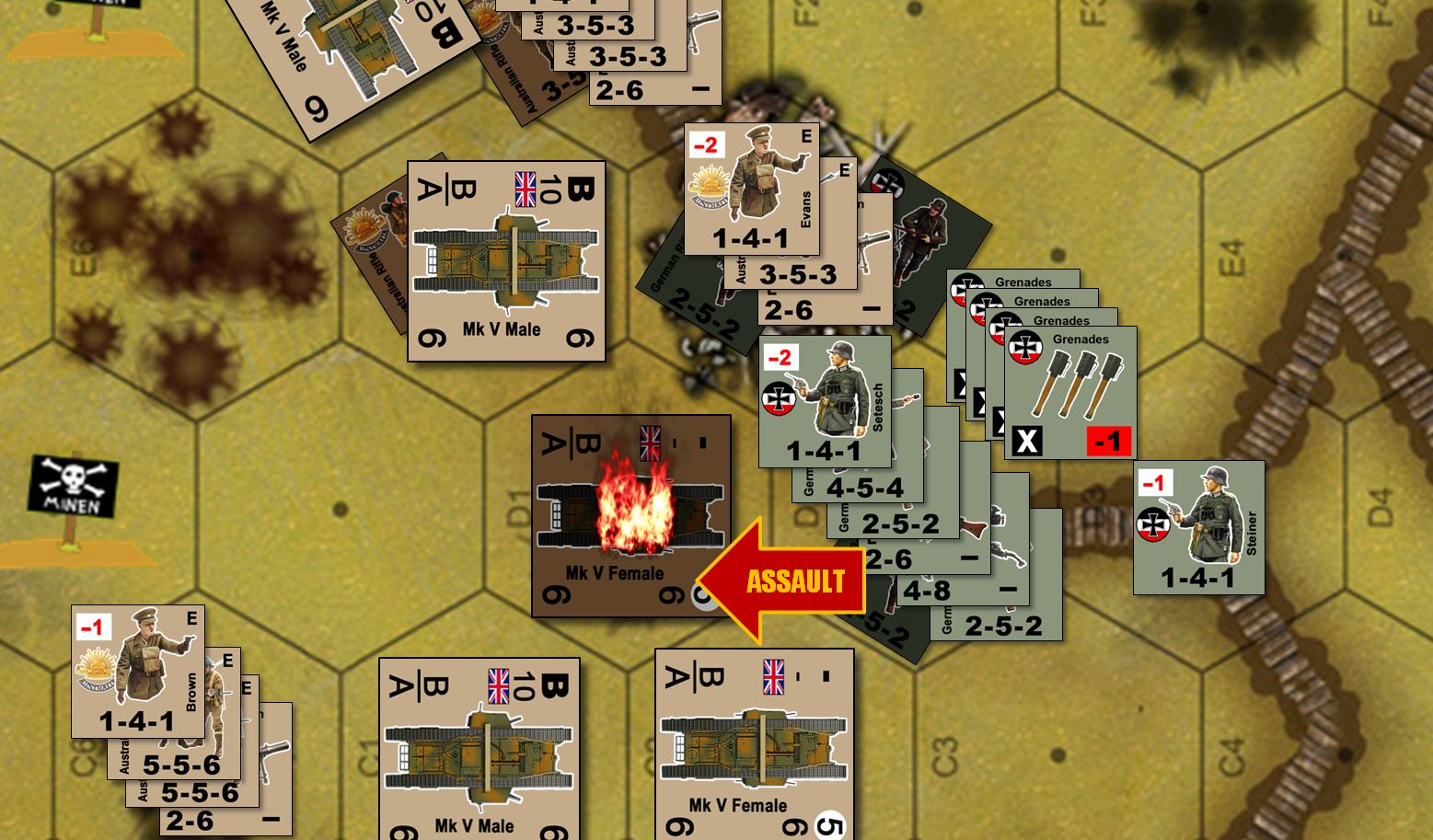
Well it’s taken quite a while to read through the articles and the comments and all I can say is to reiterate the plaudits to @oriskany and say what a well researched and written series it has been. I would normally wax lyrical about the First World War, as it is my particular passion but so much has been said in the comments that I think it’s all just about been covered. It was very interesting to read your thoughts on Monash and his development of combined arms tactics that proved so effective. So much so that Guderian was a… Read more »
Thanks very much @brucelea ! 😀 I did not know the Great War was of particular interest to you, although I suppose I should have guessed by your userID icon. 🙂 I would say (in very broad summary) the secret with Monash wasn’t in discovering anything new, but putting preexisting elements together in a slightly new way that exponentially increased their overall effectiveness. I’m also seeing in some follow-up reading that he had ammunition parachuted to some of his forward units so it didn’t have to be carried or trucked across the craters, trenches, and mines of no man’s land… Read more »
I have been reading the Les Carolyn book The Great War again and one of the things Monash did was to use dedicated supply tanks at Hamel. I don’t have the book right beside at the moment but one tank could carry the equivalent of what it would take 1000 men to carry across the battlefield
*Note* I’ll check that’s properly correct later as that might be all the supply tanks carrying capacity not just one
It was all 4 tanks
Seems to make sense. Assuming each man can carry about a 60 pound pack x 1000 men = 60,000 pounds = 30 tons / 4 tanks = about 7.5 tons each tank.
The resupply tanks were hugely successful. Porters can be caught up and suppressed by rifle or MG fire which is not the case with a tank. Certainly this went a long way for the Australians to start trusting the tank in combat. At least this time the tanks did not abandon our infantry neck deep in a river of hurt this time. It might seem strange today that these guys did not want anything to do with the tank however the tank is very rude and crude at this stage. At least the Mark V was a lot more reliable… Read more »
Thanks @jamesevans140 – Indeed, closer coordination with the tanks and infantry played a major factor in Allied success in Hamel, following through the Amiens and the rest of the Hundred Days. We tried to capture that in our V&V 1918 games. The Mark V we gave an easier trench traversing roll, and one extra point of movement. This, plus the new tank turning rules presented in Barry Doyles original V&V rule set, helped us keep the tanks closer with the infantry which really proved decisive at the last part of our Hamel game. The L3! Is this the same basic… Read more »
Expert A retired drip under pressure. I just finished going through your V&V Hamel game on the other post. I could not leave a comment as it has been marked no comments. I don’t think it is gamey. The higher the level the game the more abstract the small delays should become. In a division level game you should be focused on the big picture and not concerned about you battalions have their companies in one up two back formation. After all it is reasonable to assume the battalion commander knows his job, as do the company commanders. There should… Read more »
Thanks @jamesevans140 – “I just finished going through your V&V Hamel game on the other post. I could not leave a comment as it has been marked no comments.” Very strange. No worries, though I tested the comment field and it seemed to work fine. https://www.beastsofwar.com/project-entry/1301499/#comment-498045 “I don’t think it is gamey.” Awesome, thanks! “The higher the level the game the more abstract the small delays should become.” Maybe this is me, but I still question when these kinds of games are characterized as “abstract.” I think we as a community are so inured on the idea of the miniature… Read more »